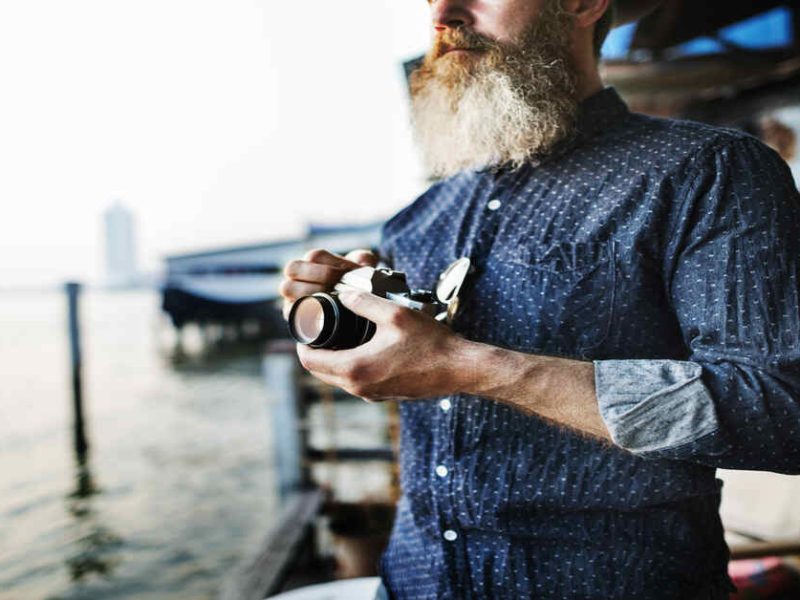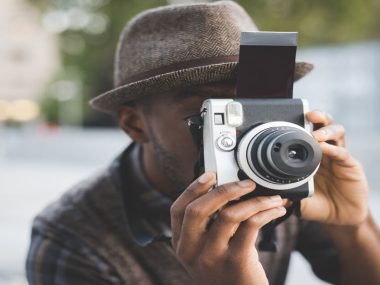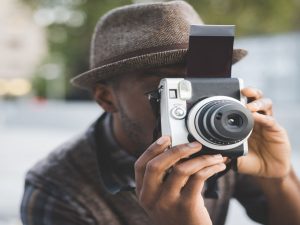There are three elements in capturing extraordinary portraits; a technical skill, creativity, and knowledge of your subject. The skills of making beautiful portraits can greatly boost your photography collection whether you are doing it professionally or just as a hobby. This guide will touch on some of the key tips and tricks of making remarkable portraits that capture the personality and the feeling of the people you are taking the portrait of.
1. Know Your Camera
Aperture, Shutter speed and ISO
A good understanding of your camera settings: It is important to get a good understanding of your camera settings before venturing into portrait photography.
- Aperture: When you have a large aperture (low f-number, say f/1.8 or f/2.8) the depth of field becomes shallow, and the background is blurred, leaving your subject in focus. This effect attracts attention to the subject that you are capturing photos and also gives your photos a professional appearance.
- Shutter Speed: A quick shutter speed (2/125s or higher) is required to prevent motion blur, particularly when your subject is in motion. In the case of portraits, make sure that you have a high shutter speed to capture a sharp detail.
- ISO: ISO would be determined depending on the lighting conditions. Set a lower ISO (100-400) when there is bright light and a higher ISO (800-1600 or more) when the light is low. Nevertheless, watch noise which may be found at more advanced ISO settings.
2. Choose the Right Lens
Portrait Photography Lens Choices
Lens selection can have an extreme effect on the quality of portraits. The following are some of the popular ones:
Prime Lenses: Lenses such as the 50mm f/1.8 or the 85mm f/1.4 are good in portraits because they have a wide easy aperture and they can produce a nice bokeh. These lenses enable one to focus on the subject and blur the background distractions.
Zoom Lenses: A good zoom lens, like a 24-70mm f/2.8, will provide the ability to change your focal length and still have a good image quality. It is especially applicable when it comes to the need to capture multiple poses and compositions without having to switch lenses too often.
Real-Life Example
The image of a model shot through 85mm f/1.4 lens by a photographer gives a gorgeous portrait. The big opening produces a beautiful blur at the background, which highlights the features and expressions of the model.
3. Take into account Lighting Techniques
Natural Light and Artificial Light
The use of lighting in portrait photography is very important. The following are some of the techniques to be considered:
Natural Light: Shooting in the golden hour (an hour after the sun has risen or an hour before the sun sets) brings out a soft and warm light that creates a desirable effect on the skin color and flatter. Seek dark spaces to evade glaring shadows in the middle of the day.
Artificial Light: When shooting in the dark or in places where there is low light, one should consider external flashes or continuous lights. Diffusers and softboxes can also be utilized in order to mellow the light and remove harsh shadows and produce a more even light distribution.
Real-Life Example
The photographer when capturing a couple at sunset would put them at the back of the setting sun (backlighting) in order to give them a warm radiance. The method helps to increase the romanticism of the portrait.
4. Establish an Interrelationship with your Subject
Directing and Communicating
It is imperative to create a rapport with your topic to get real expressions and emotions. Here are some tips:
Shake Hands: Communicate with your subject prior to the shoot and during the shoot. Questions to ask them are what they liked, what they like to do, or stories. This will make them feel less tense and feel more at ease around the camera.
Give Direction: Be precise with the instructions on poses and expressions. It is possible to show a pose or to invite them to experiment with other expressions to get more dynamic images.
5. Your Experiments with Composition
Framing and Angles
The composition is essential in the making of picturesque portraits. These are some of the methods that can be tried:
Rule of Thirds: When taking your photos, make your subject not the center of focus, according to the rule of thirds. This brings a more dynamic picture and attracts the attention of the viewer.
Leading Lines: You can make use of natural lines in your surroundings (pathways, fences or buildings) to lead the eye of the viewer to the subject matter.
Angles: Try various angles and angles. Facing a little higher or a little lower than your subject will also be shot to have some interesting effects and to emphasize the features of the subject.
6. Be Selective of Backgrounds
Choosing an Appropriate Background
The ground of your portrait may have a great influence on the composition. The following are the guidelines to selecting the correct background:
Keep It Simple: You should not use backgrounds that are distracting or hectic since they may end up diverting attention out of your subject. Bright colors or light skins suit very well to ensure that the attention is on the individual you are taking the photographs.
Use Depth: Have you position your subject a few feet with respect to the background. This creates a depth and blurs the background making your subject stand out.
Real-Life Example
The photographer uses a plain white backdrop in a studio so as to bring out the bright outfit that the model has put on. The background is not complicated, as there is also an emphasis on the expression and style of the model.
7. Focus on Details
Catching the Expressions and Emotions
Extraordinary portraits usually show the nature of the subject by their expressions. The following are hints in terms of paying attention to detail:
Eyes: The soul is seen through the eyes. They should be sharp and well-lit in order to express emotion. Apply tricks such as trying to concentrate your eyes and manipulating the aperture to get a decent bokeh effect.
Hands and Body languages: Be aware of the hands and body language of your subject. Natural gestures are able to make the portrait more detailed. Help your subject to take rest, or make funny shapes with his hands.
Conclusion
To take captivating portraits, you need to be creative, master the art and know your subject. With the right camera settings, the lenses you use, proper lighting, and an understanding of your subject, you will be able to come up with an effective portrait which captures a story and elicits emotion. Always keep in mind to experiment with composition, observe details and improve your pictures in post-processing. These advanced photography tips will accelerate your progress.
FAQs
1. So what is the most appropriate lens to use in portrait photography?
Response: Excellent lenses in portrait photography include the 50mm lenses with the f 1.8 or 85mm lenses with f 1.4 since they have excellent apertures and can produce a beautiful background blur.
2. How do I get my subject comfortable when taking photos?
Response: Chat, inquire about their interests, and be explicit on poses. By making the mood light-hearted, you make your subject feel more comfortable in front of the camera.
3. Should I get costly equipment to make the best portraits?
Response: Such an investment is unnecessary as you can take great portraits with any camera, however, good equipment may improve your work. To work on your photography, work on your technique and know lighting and composition.










